Chatsworth - A Taster
w/e 28 October 2007
All
this week's pictures were taken with a Kodak DX6490
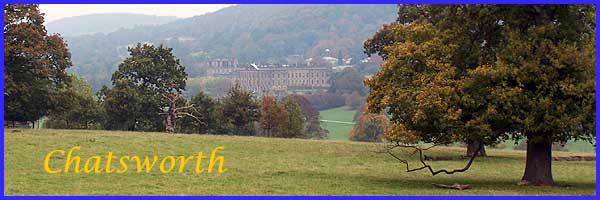
Chatsworth has long been described as a jewel in
England's crown and the estate has many famous features so all
I can do here is show a few of them in what can only amount to
a taste of what is on offer. To discover more follow this link
to the Chatsworth's
official site.
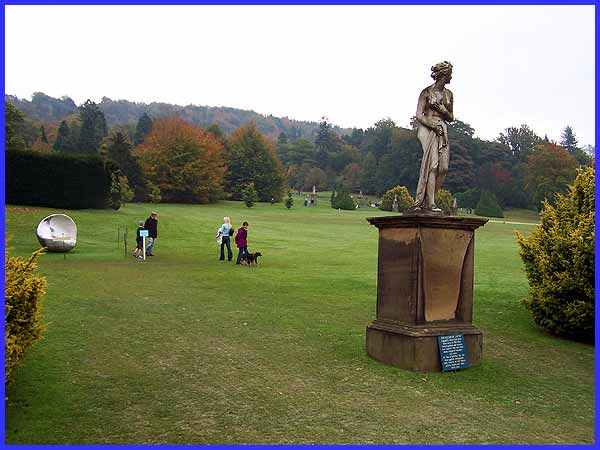
During the autumn of 2007 Chatsworth is hosting an exhibition
of more than twenty monumental sculptures set alongside pieces
of a more traditional nature. Examples of both can be seen here
on the Salisbury Lawns that were originally laid down in 1760
by Capability Brown when formal gardens and terraces were removed.
According to the blue information board, they have been mown
ever since, except during wartime, and lime and fertilisers have
never been applied. This has resulted in many varieties of grasses,
sedges mosses and wild flowers thriving.
|
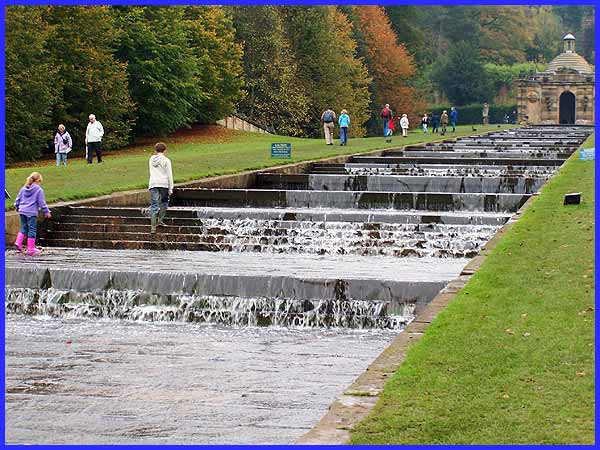
Another famous feature of Chatsworth is the Cascade. Designed
by a French engineer, Grillet, it was built for the First Duke
of Devonshire and completed in 1703. Water is piped from man-made
lakes four hundred feet above the house and the Cascade is entirely
gravity-fed with no water being pumped back up the hill. From
the bottom of the Cascade the water is used twice more in two
fountains before finally entering the River Derwent. The Temple
at the top of the Cascade was designed by Thomas Archer and as
the water descends from it down the twenty four steps, the sound
is varied as each is different to the ones both above and below.
Both Temple and Cascade were restored between 1994 and 1996.
|
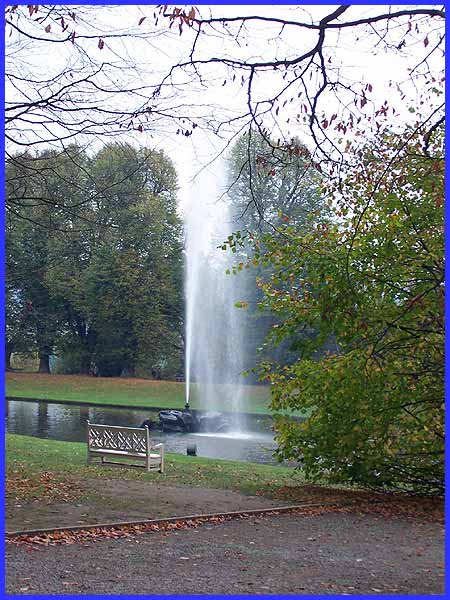
Another water feature is the Emperor Fountain which is the tallest
gravity-fed fountain in the world. Commissioned by the Sixth
Duke and built by Joseph Paxton in 1843, it is normally restricted
now to a height of 200 feet although capable of reaching 298
feet.
|
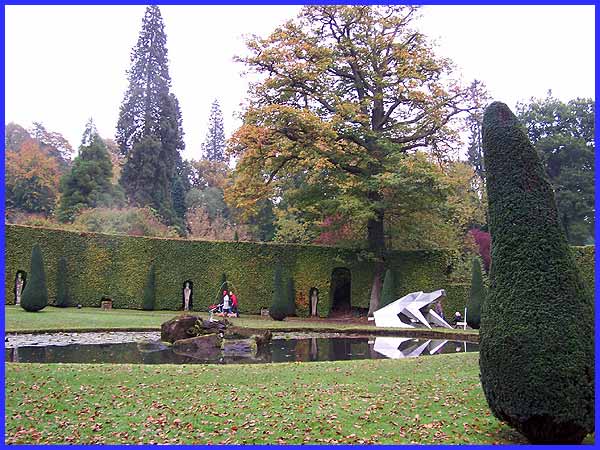
Another less grand fountain, also gravity-fed, sits in the middle
of the Ring Pond. This duck-shaped fountain spouts water from
its open beak and, according to at least one guide book, led
to it inevitably being nicknamed the Sick Duck Pond. The metal
arrangement squatting like some futuristic giant frog at the
side of the pond is another piece in the 'Beyond Limits' exhibition
of modern and contemporary sculpture.
|
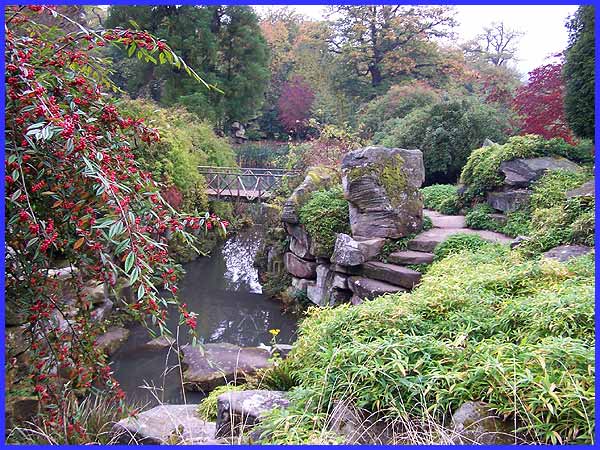
Joseph Paxton was instrumental in much of the design of the Chatsworth
gardens and in 1842, he began to build a rock garden for the
Sixth Duke. His aim was "to copy the most picturesque assemblages
of natural rocks", to ensure "the fragments employed
are massive" and that "all vegetation that accompanies
an extensive rockery should be subordinate to it ... and so disposed
as to give relief and diversity to it." I think he succeeded
on all counts, don't you?
|
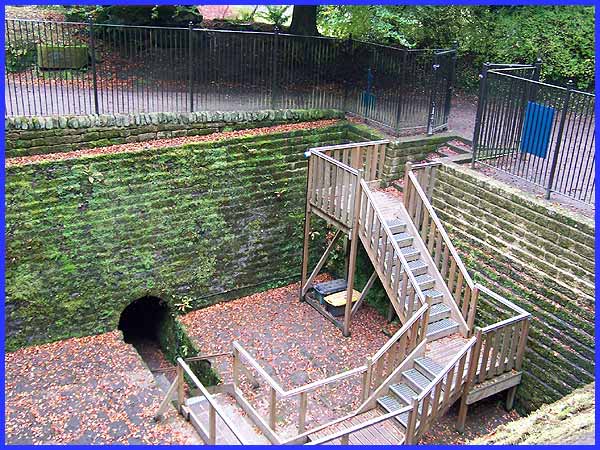
A few years prior to his work on the Rock Garden, Paxton had
constructed the coal hole and tunnel in the 1830s to supply the
boilers that heated his Great Conservatory. Requiring 300 tons
of coal every winter, coal was brought the three miles from Rowsley
Station by horse drawn carts to be transferred into small bogies
at the foot of the hole. Men then pulled the the coal-laden bogies
on rails through the tunnel to the seven boilers that heated
the Conservatory. The Conservatory was demolished in 1920 and
the hole and tunnel gradually filled with rubble and garden waste
until they were once again excavated in 2002-3.
|
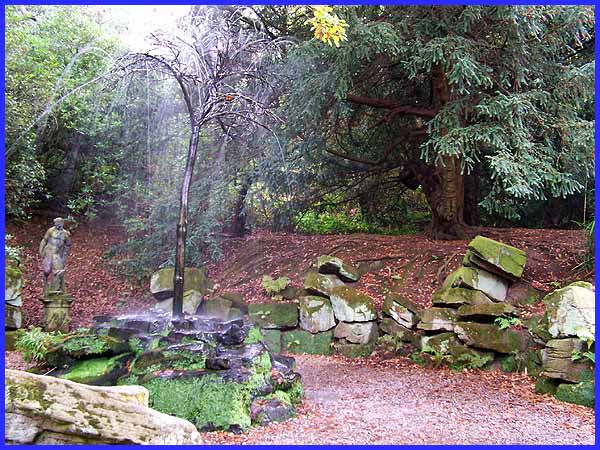
Paxton also had an involvement with the willow tree fountain
which is sometimes called the Weeping Tree or as referred to
by Princess Victoria, later to become Queen in 1837, a squirting
tree. This was originally built in 1692 and was made of copper
and lead. The unsuspecting visitor could be drenched by water
spurting from its branches and leaves. By 1826 when Joseph Paxton
was made head gardener by the Sixth Duke the fountain had fallen
into disrepair but Paxton arranged for a new one of copper and
brass, not in the original location in the centre of the Ring
Pond, but in a partially concealed glade near his new rock garden.
Since then, the willow tree fountain has been replaced twice
and was most recently restored in 1983.
|
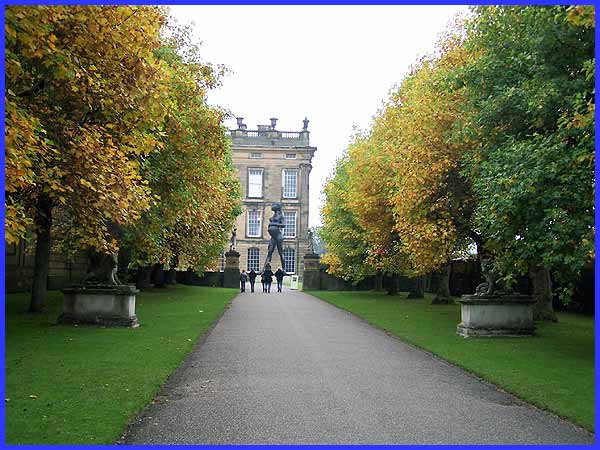
As I wrote earlier, this is only a taste of what is on offer
at Chatsworth and there is much more to be seen in the grounds
of the Estate but our visit also included a tour of the House.
This is the approach to the House dominated at the moment by
the huge Damien Hurst sculpture of "The Virgin Mother".
Forward to Part 02
|









